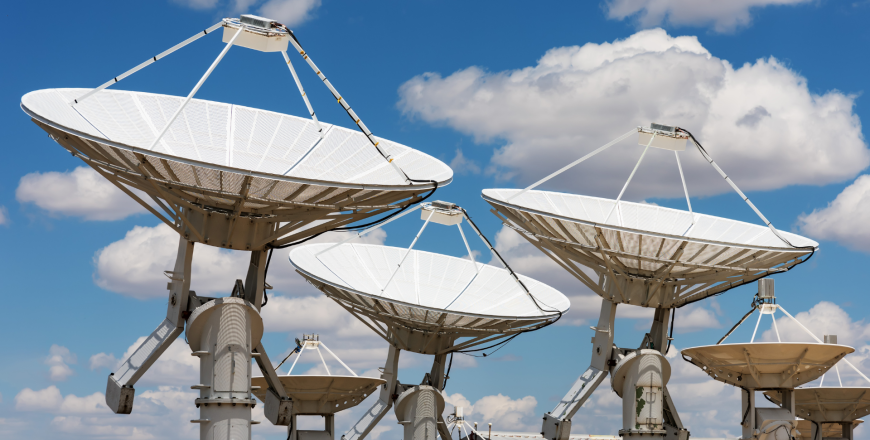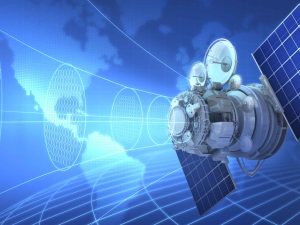Advanced Satellite Communications

Course Overview
This 5-day course is designed to provide professionals with in-depth knowledge and practical skills in satellite network planning, design, and optimization. As global demand for high-speed connectivity continues to grow, satellite communication (SATCOM) plays an increasingly critical role in expanding network coverage, especially in 5G backhaul, maritime, aviation, and remote enterprise applications.
Participants will begin with a recap of fundamental SATCOM concepts, followed by advanced topics such as link power budget calculations, parabolic reflector antenna gain, receiver sensitivity, noise power, and uplink power control (UPC). They will explore the principles behind Effective Isotropic Radiated Power (EIRP), Power Flux Density (PFD), and Gain-to-Noise Temperature (G/T), which are critical for ensuring efficient satellite link performance.
The course delves into the impact of thermal noise (kTB), rain depolarization, and ITU rain regions on satellite signals, along with strategies to mitigate these challenges. Participants will also gain insights into Adjacent Channel Interference (ACI), Adjacent Satellite Interference (C/ASI), and uplink/downlink ASI, learning how to optimize network designs to minimize disruptions.
A key focus will be on earth station high-power amplifier (HPA) output back-off (ES HPA OBO), input back-off (IBO), and output back-off (OBO), as well as transponder amplifier technologies, including LTWTA, TWTA vs SSPA. The course will also cover automatic level control (ALC), transponder IBO/OBO, saturation flux density (SFD), and processing gain (spreading gain) to ensure effective bandwidth utilization.
Hands-on sessions will include live demonstrations on antenna gain calculator usage, link budget planning, and flux control attenuator (FCA) settings. Through interactive case studies and practical exercises, participants will learn how to enhance satellite efficiency, optimize downlink budgets, and configure low-noise block (LNB) noise figures for improved signal reception.
Target Audience
This course is ideal for those with a foundational understanding of SATCOM who wish to deepen their expertise in link budget analysis, satellite capacity planning, interference mitigation, and network security.
- 3G/4G/5G Mobile Network Operators
- Broadcasting Companies that utilize satellite links
- Telecommunications Companies (PTTs, carriers)
- Satellite Operators
- Internet Service Providers
- IT & System Integrators
Duration & Training Format
- Classroom: 5 days
- LIVE Virtual: 35 hours
- A minimum of 8 or more participants is required for a Classroom session to commence.
- A minimum of 6 or more participants is required for a LIVE Virtual session to commence.
- LIVE Virtual courses can be conducted for 5 hours or 7 hours daily. Please note that the number of training days will be extended if you opt for 5 hours daily.
Upcoming Course Dates
21 – 25 Jul 2025 (Mon – Fri), GMT +8
22 – 26 Sep 2025 (Mon – Fri), GMT +8
If you are keen on attending the scheduled courses above, please register your interest via our course enquiry form.
Course Objectives
At the end of the course, participants will be able to:
- Demonstrate a thorough understanding of the fundamentals of SATCOM, including frequency spectrum and satellite bands
- Utilize satellite network planning, design, and optimization
- Analyze and evaluate satellite use cases for 3G/4G/5G
- Ensure efficient satellite link performance by understanding Effective Isotropic Radiated Power (EIRP), Power Flux Density (PFD), and Gain-to-Noise Temperature (G/T)
- Conduct satellite radio link planning using SatMaster Pro
- Apply knowledge of various parameters considered in satellite link design to optimize SATCOM systems
- Identify and mitigate the impact of free space loss and atmospheric impairments on SATCOM
- Apply knowledge related with Link power budget calculations, parabolic reflector antenna gain, receiver sensitivity, noise power, and uplink power control (UPC)
- Understand Thermal noise (kTB), rain depolarization, and ITU rain regions
- Evaluate cybersecurity challenges related to the satellite industry and implement appropriate measures to mitigate them
- Apply knowledge of VSAT applications from legacy to modern systems
- Utilize 5G backhaul, maritime, aviation, and remote enterprise applications
- Demonstrate expertise in the VSAT procurement cycle, including RFP/RFQ/RFI and SLAs
- Implement VoIP and IPLC over Satellite for efficient communication
- Understand earth station high-power amplifier (HPA) output back-off (ES HPA OBO), input back-off (IBO), and output back-off (OBO), as well as transponder amplifier technologies, including LTWTA, TWTA vs SSPA
- Deliver carrier ethernet services over satellite to improve network performance
- Utilize satellites in position, timing, and navigation systems
Course Outline
- Recap of SATCOM Fundamentals
- Characteristics of LEO, MEO, GEO Satellites and their Pros and Cons
- Satellite Frequency Bands and their Pros and Cons
- Multiplex Schemes: FDMA, TDMA, CDMA, SCPC, MCPC, etc.
- Linear and Circular Polarization
- Satellite Beams: Global, Regional, Spot Beams, Steerable Beams
- EIRP and G/T
- Link Planning: Transmit Power, Antenna Gains, Free Space Loss, Receive Power, etc.
- Transponder: Carriers, Channel Assignments, Bent Pipe, Regenerative Type
- System Design and Engineering
- Link Path Calculations
- Link Budget Parameters
- Isotropic vs Directional Antenna
- Design Calculations for Antenna Gain and Beamwidth
- Effective Isotropic Radiated Power (EIRP) and Power Flux Density (PFD)
- Solar Outrage Calculations
- Atmospheric Attenuation
- Satellite Radio Link Planning Workshop
- Introduction to Software Tool
Core Design Parameters and Link Budgeting
- Design Parameters
- Link Budget Design
- Detail Design via Software
Case Study
- Design Parameters
- Selecting Locations
- Antenna Parameters
- Uplink and Downlink Characteristics
- Design Calculations
- Generating Results and Final Report
Antenna Characteristics and Gain
- Antenna Gain and Beamwidth
- Factors affecting Antenna Gain
- Calculating Antenna Gain and Beamwidth via Software
Key System Parameters and Performance Metrics
- Effective Isotropic Radiated Power (EIRP)
- Receiver Sensitivity and Noise Power
- Gain-to-Noise Temperature (G/T)
- Path Loss Calculations
- Look Angles: Elevation and Azimuth Angle
Satellite System Components
- Transponder: Antenna, LNA, BPF, Down-Converter, HPA
- Transponder Types
- Transponder Amplifier Technologies, including LTWTA, TWTA vs SSPA
Interference and Capacity Planning
- Adjacent Channel Interference
- Satellite Capacity Planning
- Input and Output Back Off
- Uplink Power Control (UPC)
- Adjacent Channel Interference (ACI), Adjacent Satellite Interference (C/ASI), and Uplink/Downlink ASI
Noise, Fading, and Atmospheric Effects
- LNB Noise Figure
- Thermal Noise (kTB)
- Rain Depolarization
- ITU Rain Regions
Advanced Link Design and Simulation
- Designing via Software: Uplink/Downlink, ASI, Rain Model, Satellite, and Carrier-related Parameters
- Figure of Merit (G/T) and Energy per Bit (Eb/No)
- FEC Code Rate, Carrier Spacing, Roll-off Factor, Implementation Loss
Final Report and Additional Exercises
- Generating Final Report/Design
- More Design Exercises
Orbital Mechanics and Calculations
- Orbital Math: Gravitation vs Centripetal Force
- Calculating Geosynchronous Radius
- Calculating Geosynchronous Velocity
- More Exercises
Transponder Bandwidth Calculations
- Transponder Bandwidth Equivalent
- Bandwidth-Limited vs Power-Limited
- Factors that affect Bandwidth and Power
- Relationship of Modulation, FEC, and BER
- Symbol Rate and Roll Off Factor
Additional Link Planning Exercises
- More Case Studies
- Computation of Look Angles
- Bent Pipe vs Advanced Transponder
- Analysis of Design Output Results
- Optimization of Design
- Examples and Exercises
- Antenna Gain Calculator Usage
- Link Budget Planning, and Flux Control Attenuator (FCA) Settings
- Interactive and Practical Case Studies
- Enhance Satellite Efficiency
- Optimize Downlink Budgets
- Configure Low-Noise Block (LNB) Noise Figures
- VSAT Applications – PDH, SDH, DVB and Ethernet
- Evolution of DVB Standards
- Interfaces on Satellite Modem
- Legacy Interfaces: PDH and SDH
- TDM vs Ethernet Interfaces
- OAM
- Mobile Backhaul
- Satellite News Gathering
- 5G backhaul, Maritime, Aviation, and Remote Enterprise Applications
- Security in Space
- Increasingly Sophisticated Threats
- Cybersecurity for tomorrow’s Space Industry
- Satellite Industry Leadership in Cybersecurity Collaboration
- ITU’s Global Cybersecurity Agenda
- Core Principles for Cybersecurity
- Major Security Issues
- Classification of the Major Scientific Contributions dealing with Security in SATCOM
- Integration of NTN with TN and New Security Environment
- Security Challenges in Space and Ground Segments
- IPSec Architecture
- Potential Security Solutions
- Security Key Management
- VSAT Equipment and Bandwidth Procurement
- SATCOM Market Structure and Ecosystem
- Defining the Needs
- Procuring End-to-end vs Component Services
- Technical Considerations
- Shared Vs Committed Bandwidth
- Bursting Capacity
- Selecting a Partner Provider
- RFP, RFQ, RFI
- Evaluating Proposals
- Signing the SLA
- Carrier Ethernet Overview
- Role of MEF, ITU and IEEE
- Standardized Services
- Services Operations, Administration and Management (SOAM)
- Reliability
- Point to Point and Multipoint Services in SATCOM
- Quality of Service and Class of Service
- Performance Management
- Satellite Solutions for 4G/5G
- Satellite Benefits for 5G
- Bandwidth and Latency Requirements of 5G Use Cases
- 5G Use Cases: eMBB, uRLLC, mMTC
- Technical and Standardization Issues
- VoIP and IPLC Over Satellite
- Characteristics of VoIP
- Challenges of VoIP over Satellite
- QoS and Traffic Prioritization
- Comparison Techniques
- Bandwidth Requirement
- Bit Rate Calculations
- Transponder Management
- VoIP Protocols
- International Private Leased Circuit (IPLC)
- International Ethernet Private Line (IEPL)
- Features of IPLC and IEPL
- VPN Via Satellite
- Satellite E-Line and EVPL
- Navigation Systems and Synchronization
- GPS, GLONASS, Beidou, Galileo, etc.
- GNSS-1 vs GNSS-2
- Global Satellite-Based Augmentation Systems
- Comparison of Systems
- GPS Frequencies and Orbits
- Positioning, Navigation and Timing
- Network Synchronization in Communication Networks
- Clock Stratum
- Translation of Time from GPS
- GPS Signal Concerns and Security Issues
- NTP vs PTP (IEEE 1588 v2)
Note: A Certificate of Completion will only be issued upon achieving at least 75% attendance for the course.
Pre-requisites
Participants must have completed the ‘An Overview of Satellite Communications‘ course before taking this course. This course assumes and builds on participants’ foundational understanding of SATCOM.



